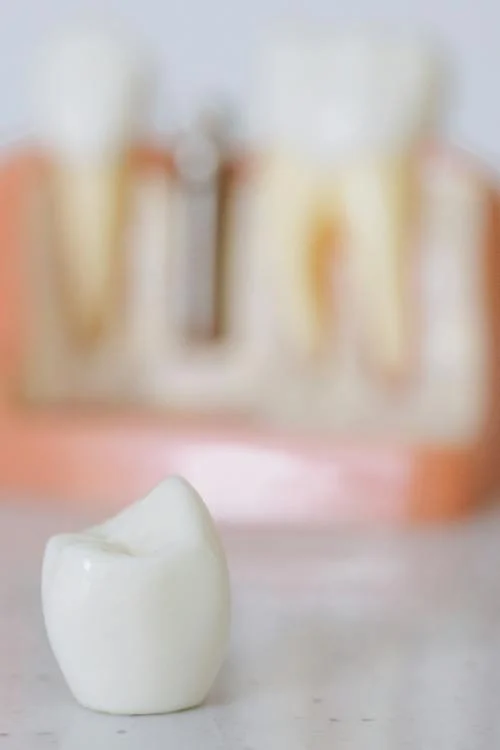Acidic juices, coffee, sodas, smoke, tea, highly pigmented foods, and certain medications can bring unwelcome damage to our pearly white teeth, not that they should be completely white. Our teeth’ natural pigment is light yellow to light yellow-red, and as you grow older, they tend to get darker. As time passes, the surface enamel erodes and cracks and exposes the dentin: the less mineralized interior of the tooth absorbs the color of food. Stains also tend to latch onto the tartar, and plaque builds up between and on the teeth and finds refuge in cracks.
Numerous things can stain our teeth, including irregularities in individual metabolism, antibiotics, and even high fever. The yellower your tooth becomes, the easier it is to remove. The deep brown stains like those caused by the use of antibiotic tetracycline when teeth are developing during childhood can be really tough to get rid of.
The greats news is— a lot of common teeth stains can usually be avoided. Try these different methods of how to reduce teeth stain and whiten your teeth.
Brush Your Teeth After Every Meal
Regularly brush your teeth in a circular motion, and not back and forth, to have lesser chances of retaining teeth stains.
Rinse Often
Rinse the food out of your teeth right after every meal. After eating a juicy burger topped with lettuce, bacon, tomato, and ketchup your teeth will need a good cleaning. If you can’t run to the restroom, take a swig out of your water, rinse, and swallow at your table.
Switch To Using An Electric Toothbrush
The electric version of toothbrushes can clean the teeth of reluctant brushers more often than the manual version. However, it depends more on the way you brush rather than the kind of toothbrush used when it comes to removing plaque.
Monitor Your Plaque Quotient
Use the disclosing solution given by your dentist to rinse your teeth and reveal where the remaining plaque is. These are the spots where the teeth will stain if your brushing techniques do not improve.
Sip Through A Straw
To prevent staining or restaining your teeth. Try drinking beverages such as soda, tea, and coffee with a straw, avoiding staining your teeth. It may not be comfortable, but it can limit the exposure.
Use a Whitening Toothpaste
In the past, dentists warned patients about using over-the-counter whitening products since they have rough abrasives that may erode the tooth’s enamel. But now, manufacturers have started using peroxide instead of the harmful abrasives to give a slightly brighter effect after brushing.
However, you shouldn’t expect instant miracles. Peroxides in toothpaste only stay on the teeth for a brief period. They don’t last long enough and only give just a little bit of whitening effect. Still, even the lighteners given by the dentist also won’t last forever since there are no permanent solutions.
Gently Scrub Your Teeth
Over aggressively brushing your teeth can expose even darker-hued dentin just as abrasive products scrub away the enamel. Doing this can make your teeth look even dirtier.
Use Tooth Strips
Tooth strips resemble packing tapes but do fit across the teeth. These strips keep the peroxide on the teeth much longer than a teeth polish, which gets them a little whiter. They’re safe, inexpensive, and simple. Regular usage can lighten the teeth for up to 2 to 3 shades.
Be Fussy About Mouthwash
Every type of mouthwash is good for rinsing, but one with an antibacterial action can lessen stain-catching plaque. You can find a lot of whitening mouthwash products that can be of help.
Use Bleaching Trays
This home-bleaching program is among the most effective methods of bleaching teeth. The dentists will give you a custom-fit mouth-guard-like tray that fits perfectly over your teeth. You have to fill it every night with a concentrated bleach solution and use it for 1-2 hours a day, for about 1-2 weeks. This option can be more expensive than the rest, but the results are more effective than with over-the-counter products.
Some companies make over-the-counter bleaching kits. These come with a tray and a whitening gel that fits your teeth. However, since the trays are one-size-fits-all, they don’t specifically conform to the surfaces of your gums and teeth. This means the peroxide may be distributed unevenly and irritate the gums. Professional bleaching works better because they utilize a concentration of peroxide that can penetrate the small tubules from outside the teeth into the dentin, oxidizing the discoloration.
Do Everything In One Visit
If you don’t have time to spare because you have a special event to attend, your dentist can bleach your teeth in only 1-2 hours by using a concentrated solution of carbamide peroxide and a special light to pushes the solution into the dentin. However, if you have sensitive teeth, you should be wary of this method as it can worsen the sensitivity. It’s highly recommended for you to use the slower and more conservative method.

